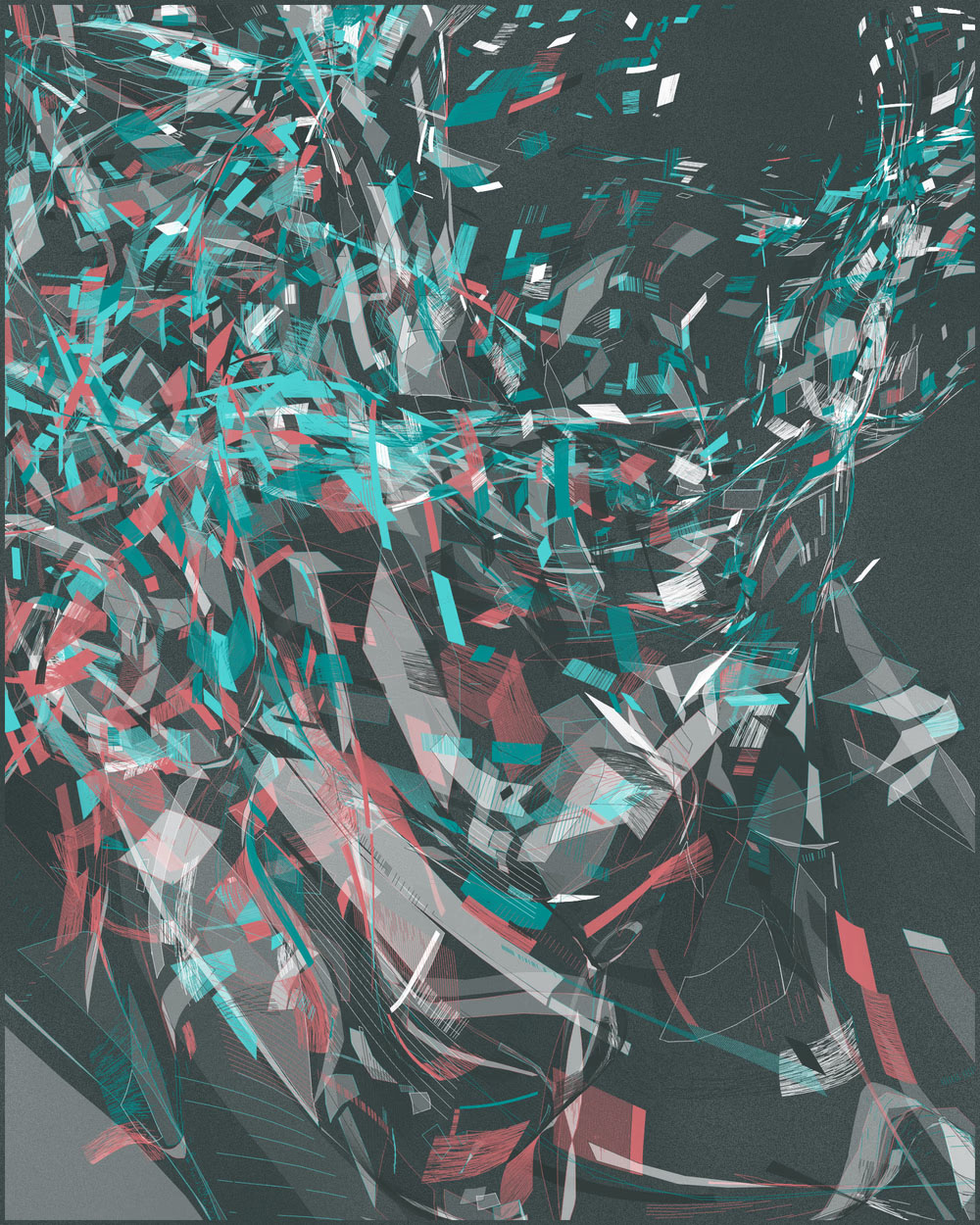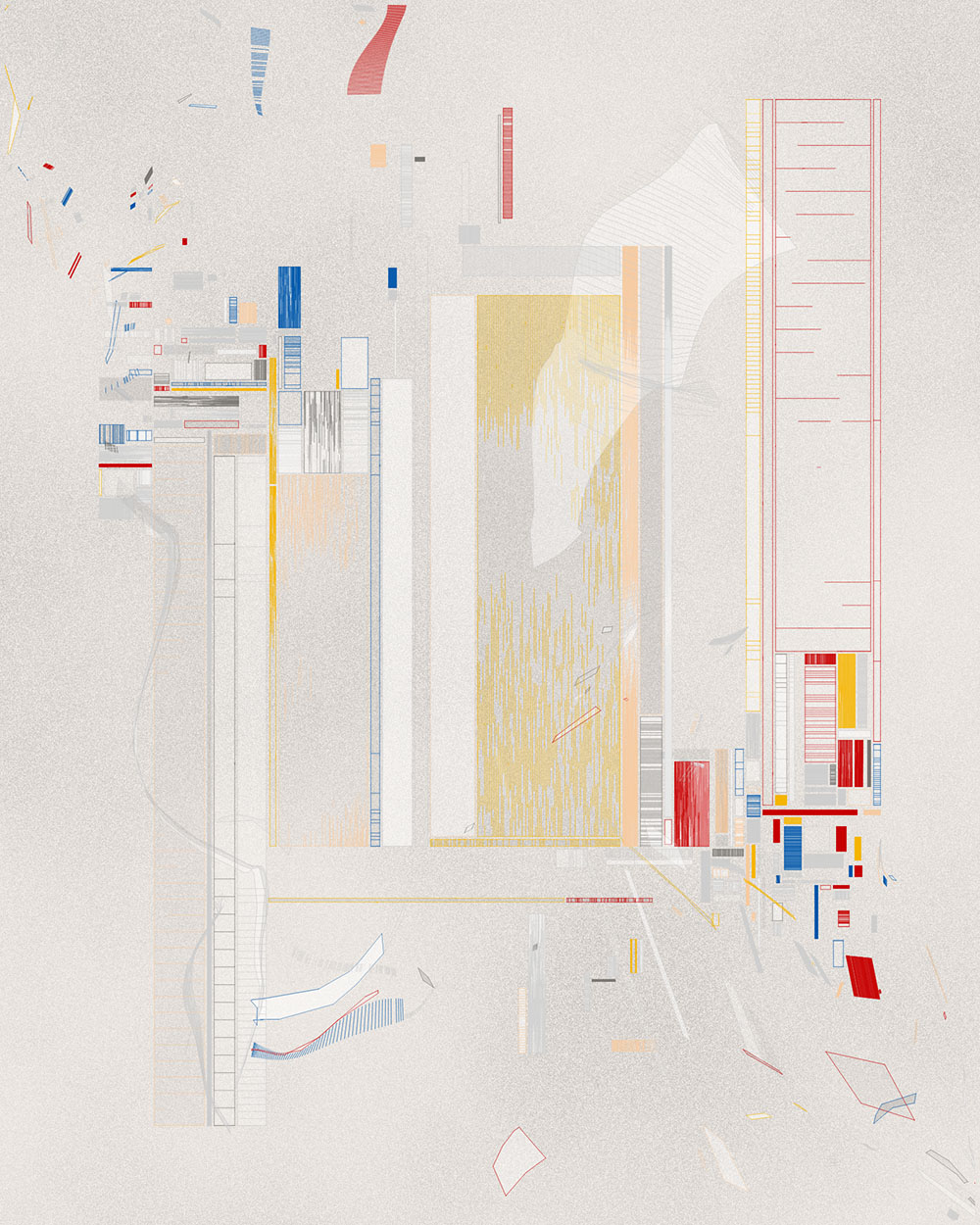
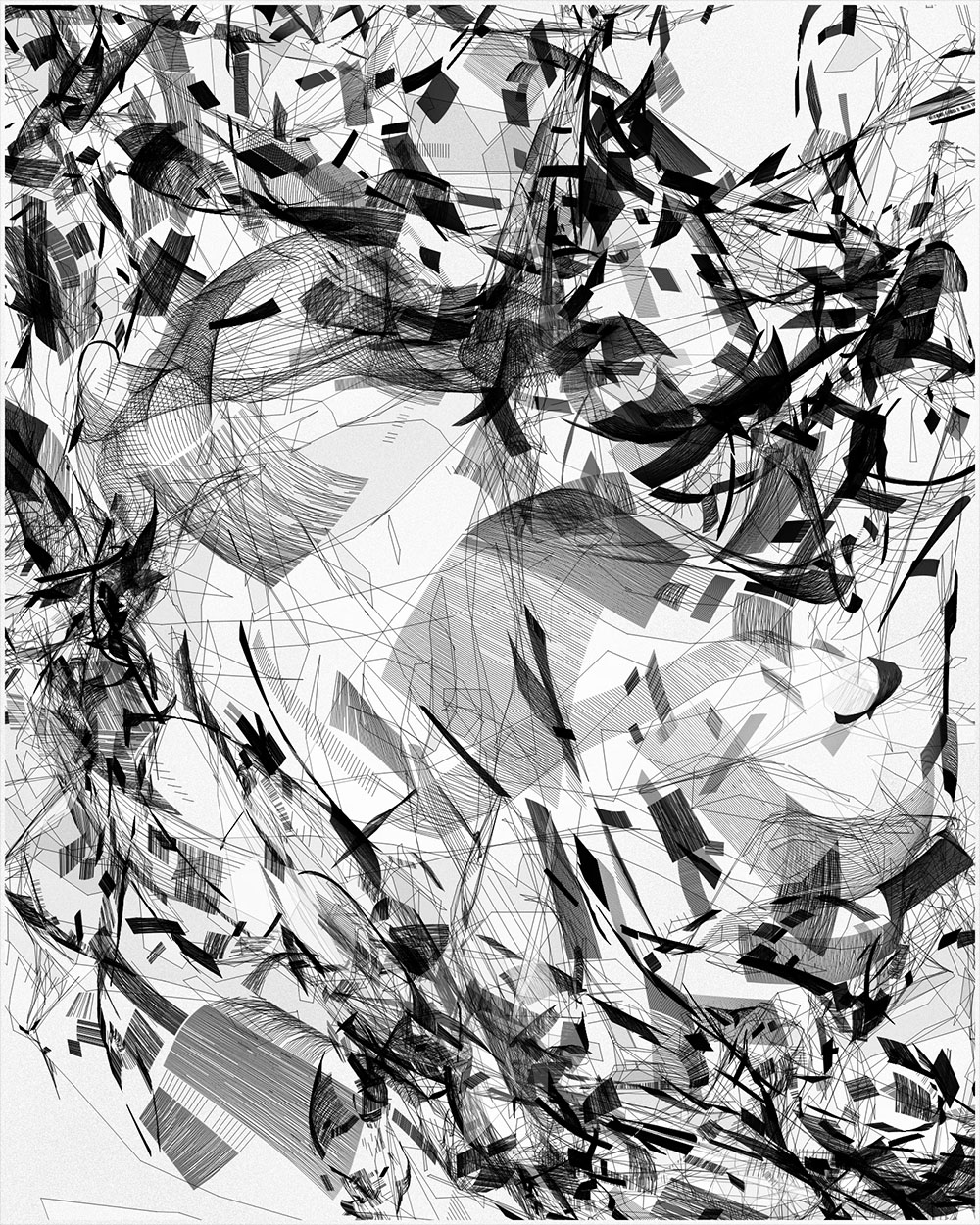
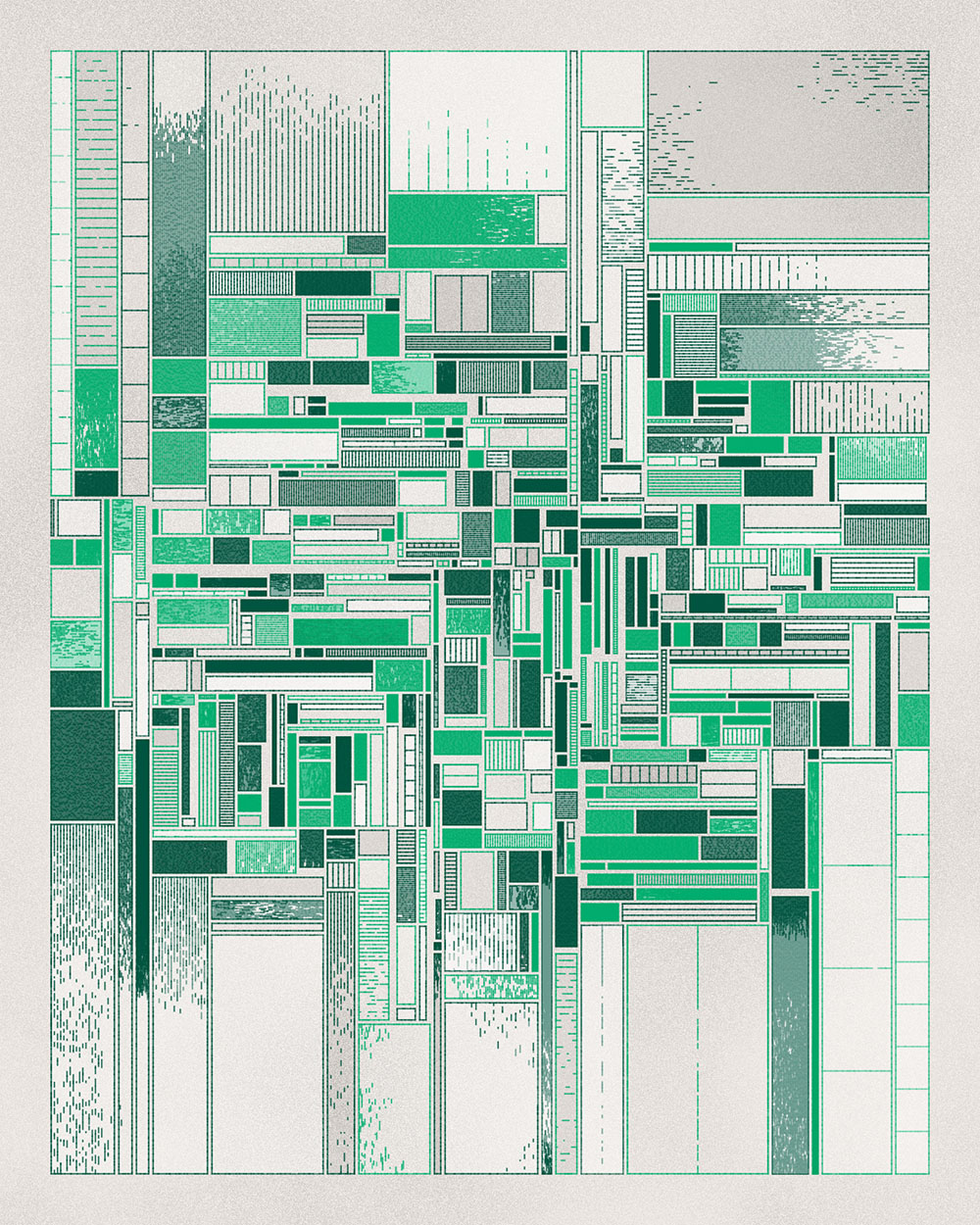
Concept
'Mutual' investigates the concept of (non-)duality, visualised by a triptych of interdependent outputs.
This generative artwork consists of three distinct visual representations sharing a connection to a primary framework from which they cannot be detached. Although separate manifestations seem to exist, they all emerge from a common fundamental substrate. They are not disparate but are anchored to the same underlying structure.
The first state is the ordered state. Ratio and rigidity dominate the visual landscape resulting in an architectural feel. Straight lines and strictly ordered shapes combine to hint at an aerial view of an urban landscape or an organised network.
The second state is the excited state. The strictness of the grid of lines starts to loosen and slowly dissolves. Emotions and instinct thrive, and nature takes over. The straight lines bend and warp to shape an organic, fragmented canvas. The geometry escapes its rigid structure like an electron freed from its atomic orbit.
In the third state - the interaction - both states reach a certain equilibrium, mutually occupying a collective space. Like both sides of a brain, these two states form a collaboration in the sense that they work together without being each other's opposite. Sometimes stable and well-balanced, sometimes balancing on the tipping point of reverting back to one of its former appearances, signalling their interdependence.
Visually this results in a triptych of three individual but complementary designs.
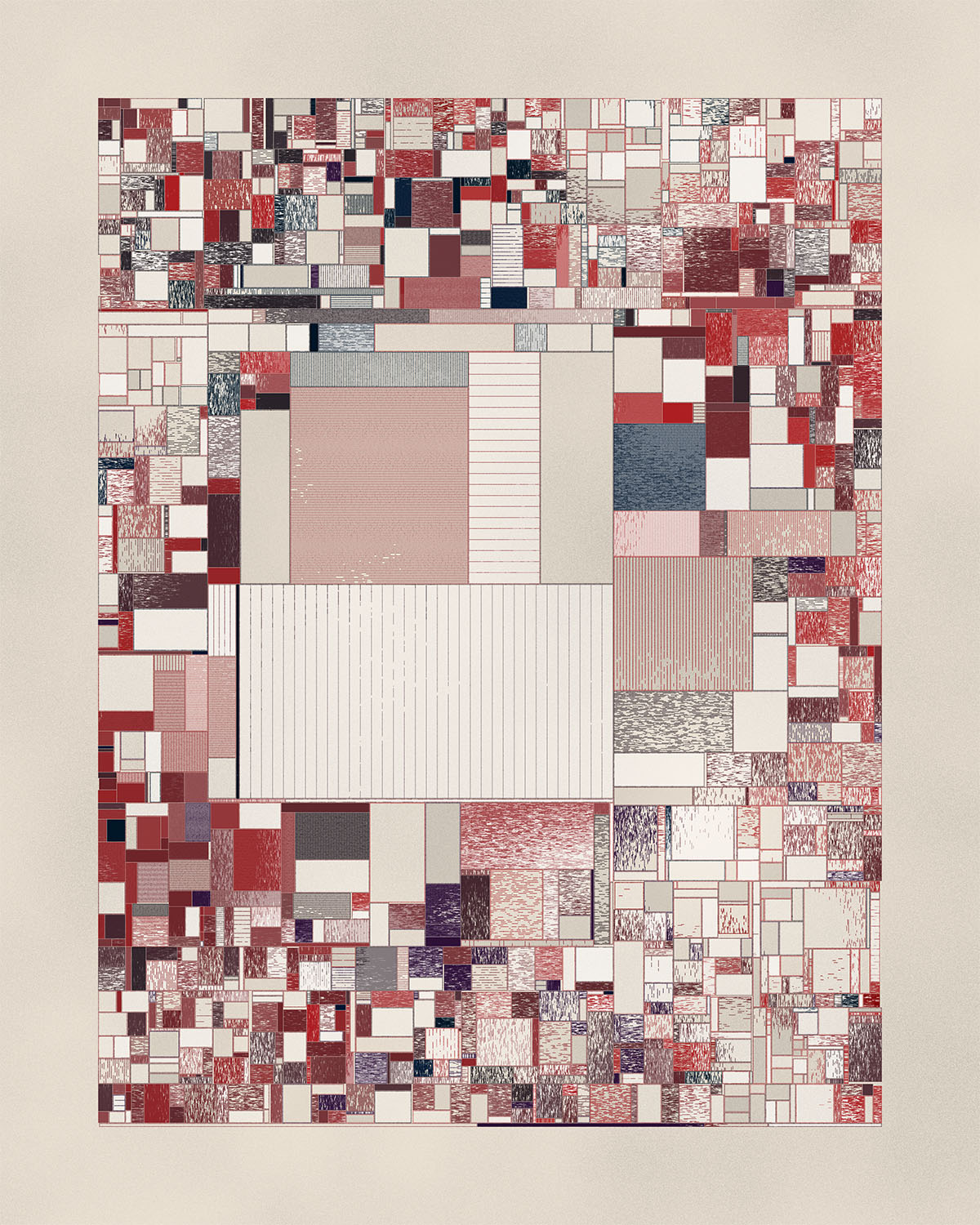
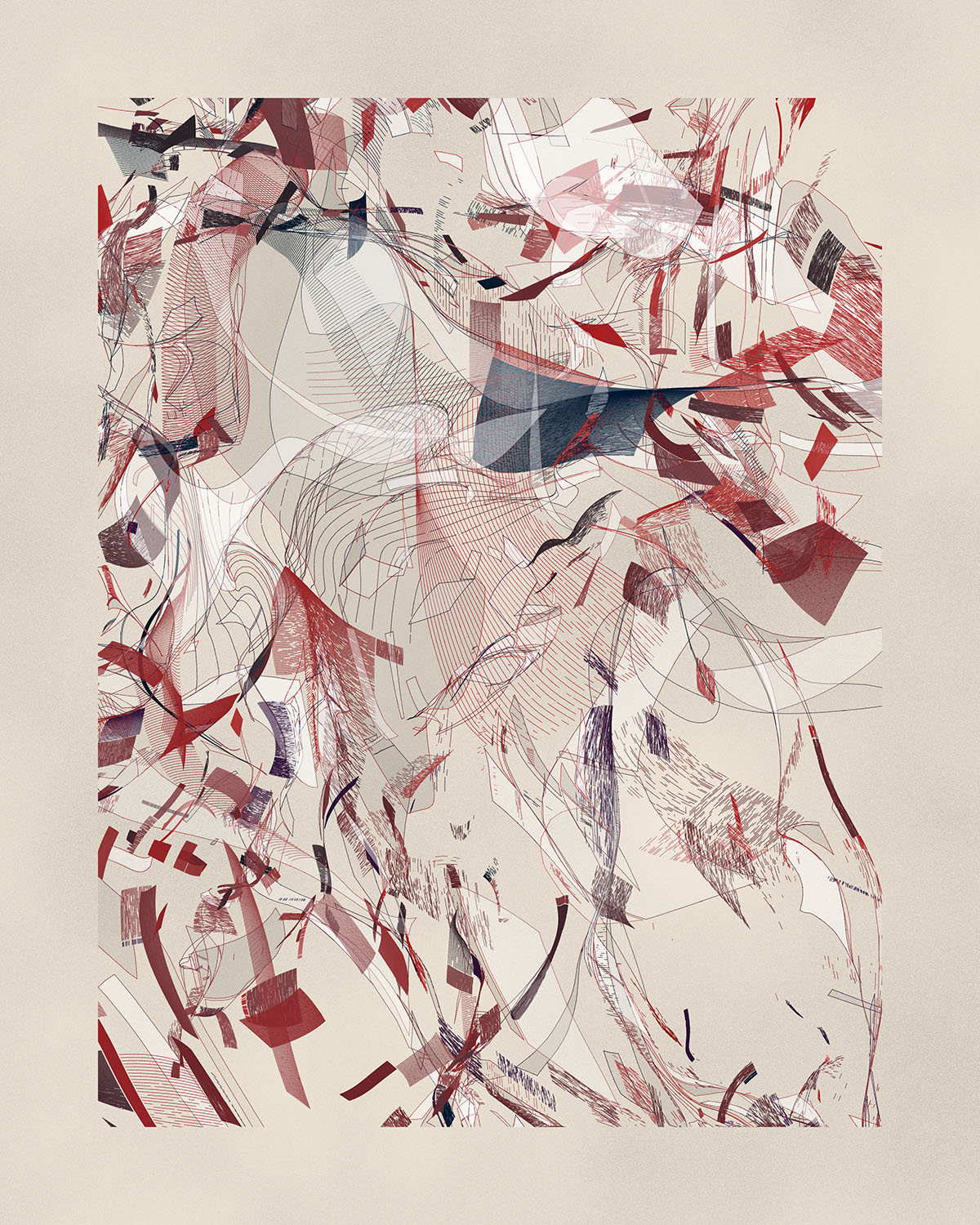
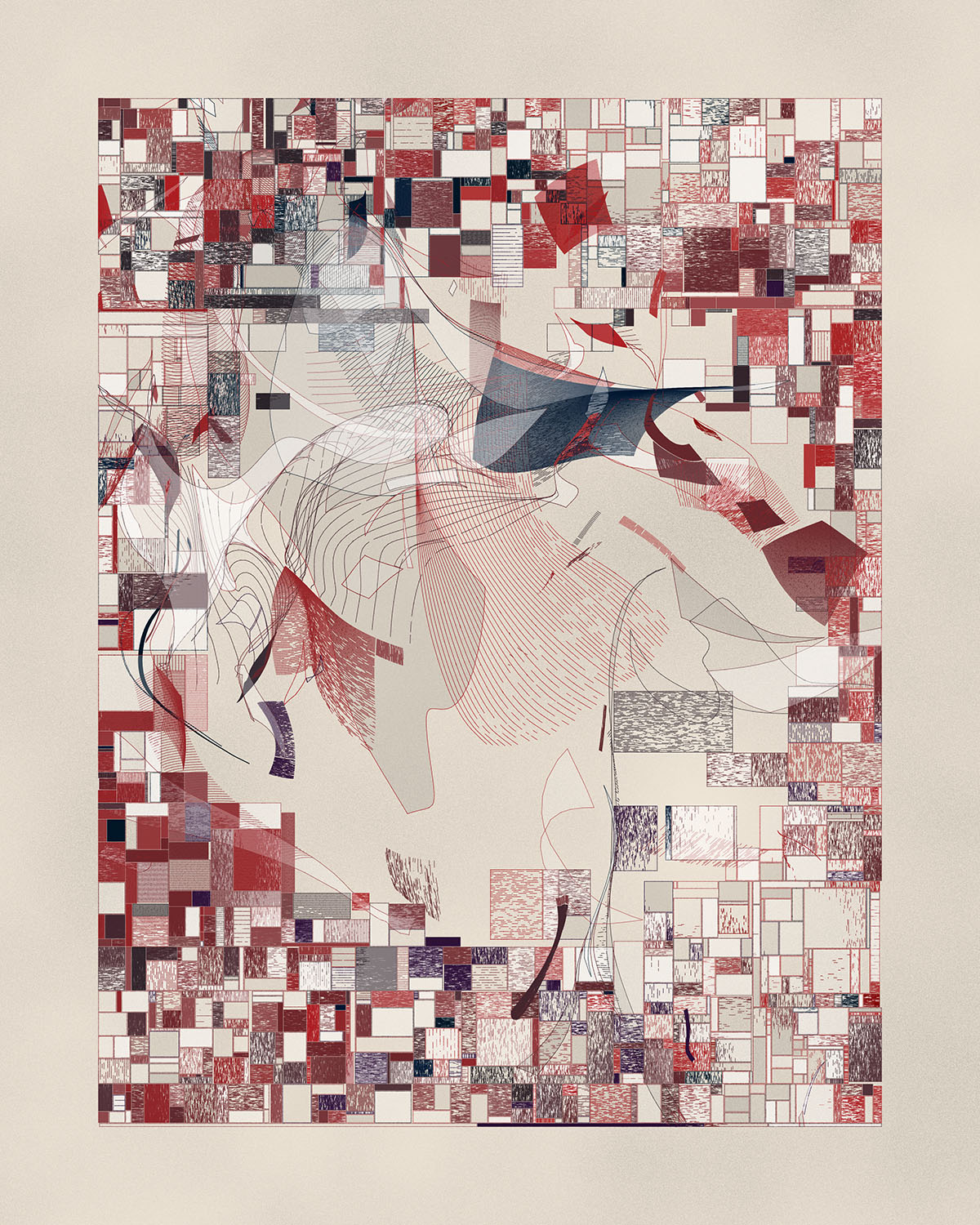
The ordered, excited and interaction state
Subdivision
The geometric foundation of this generative art piece is a subdivision, an algorithmic method that Stefan has been working on over the last few months.
This can best be visualised as follows: Drop a pebble in a square sandbox at a random location. Now draw a horizontal or vertical line at this position in the sand. The first encompassing box has now been divided into two smaller boxes. Now repeat this process at will. By controlling where to drop the pebbles, in what order and whether to draw a horizontal or vertical line, this visual process can be guided.
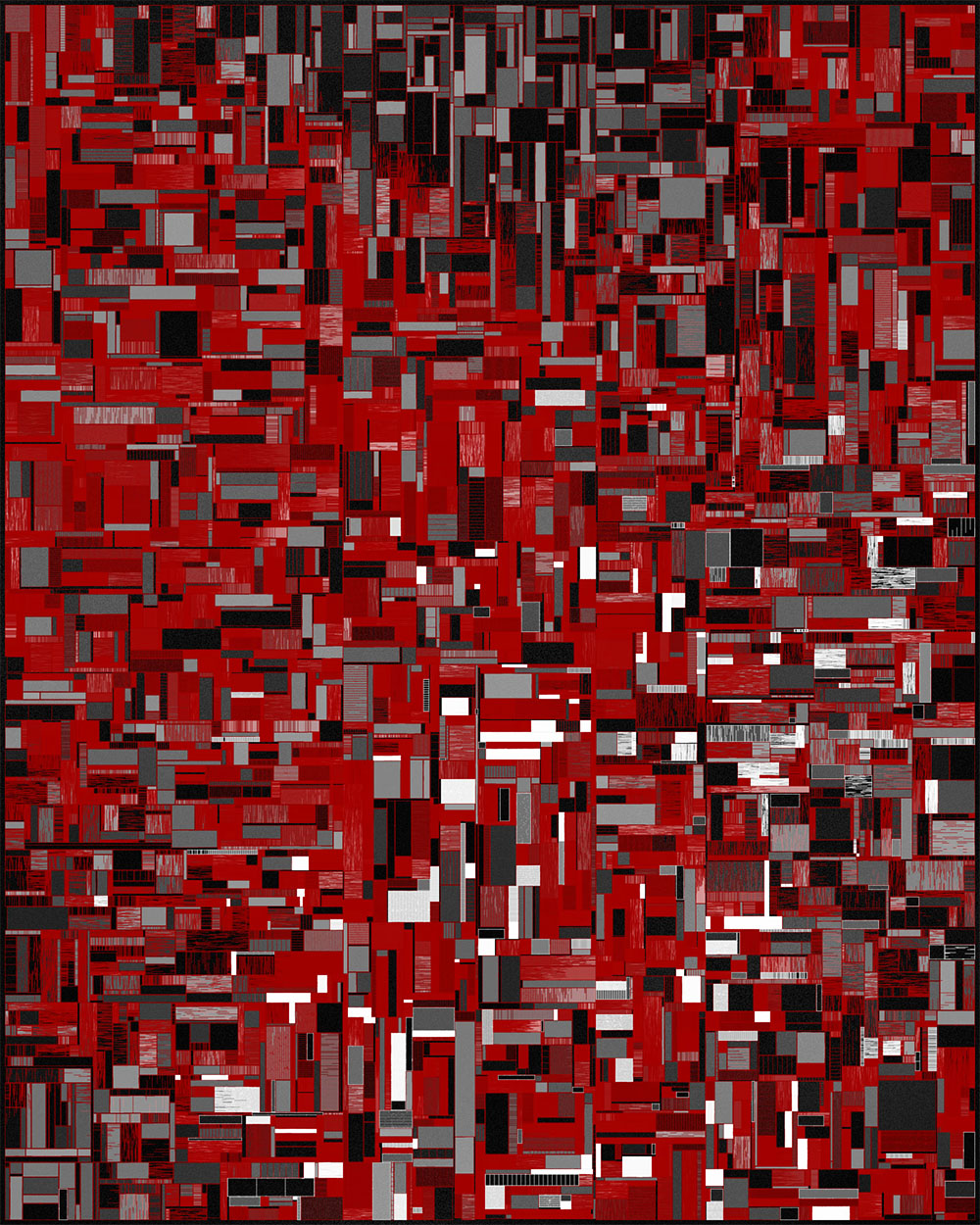
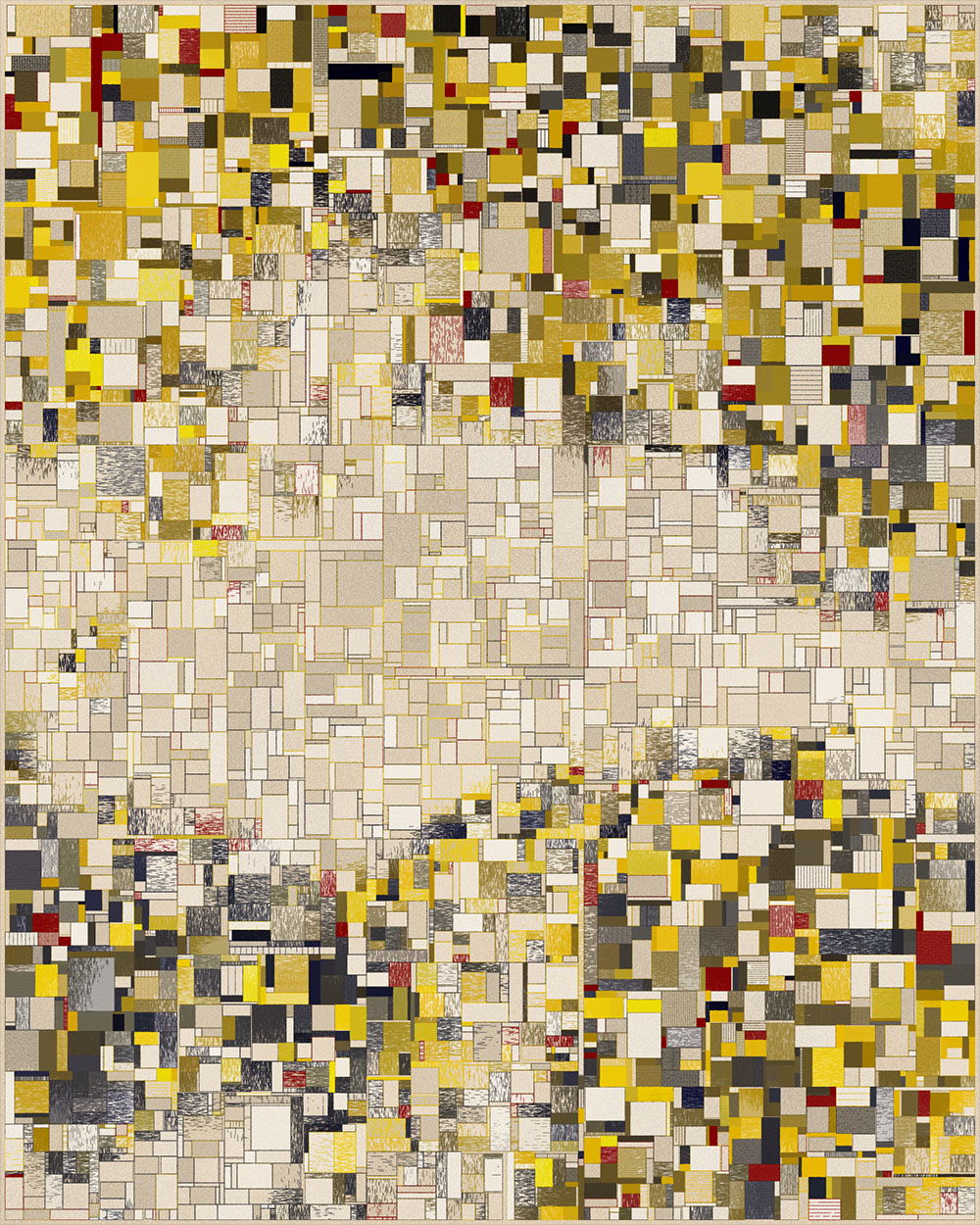
Light maps
A light map is created by drawing simple geometric shapes on a black and white canvas. The brightness values of the canvas are sampled at certain points and used as inputs for algorithmic processes. By manipulating these shapes, like applying an amount of blur, the sampled values can be smoothed and manipulated in all sorts of ways and the resulting values can easily be visualised.
Light maps visualised
Animation & interaction
Each piece displays a randomly chosen default state: ordered, excited or interaction. But these states can be cycled through by pressing a key, thus invoking a sense of wonder and exploration within the viewer. Each state unveils itself through an organically constructed animation.
Color
“Earth A Run Red”, “Green Velvet” and “Black Space” are some of the 10 color palettes used in total. They provide a lot of variation while maintaining a consistent look and feel throughout the collection. Some colour schemes use a sampled image to generate colours while others have a predetermined palette. Some arrangements are enhanced with an accent color, whose appearance is controlled by an additional light map.
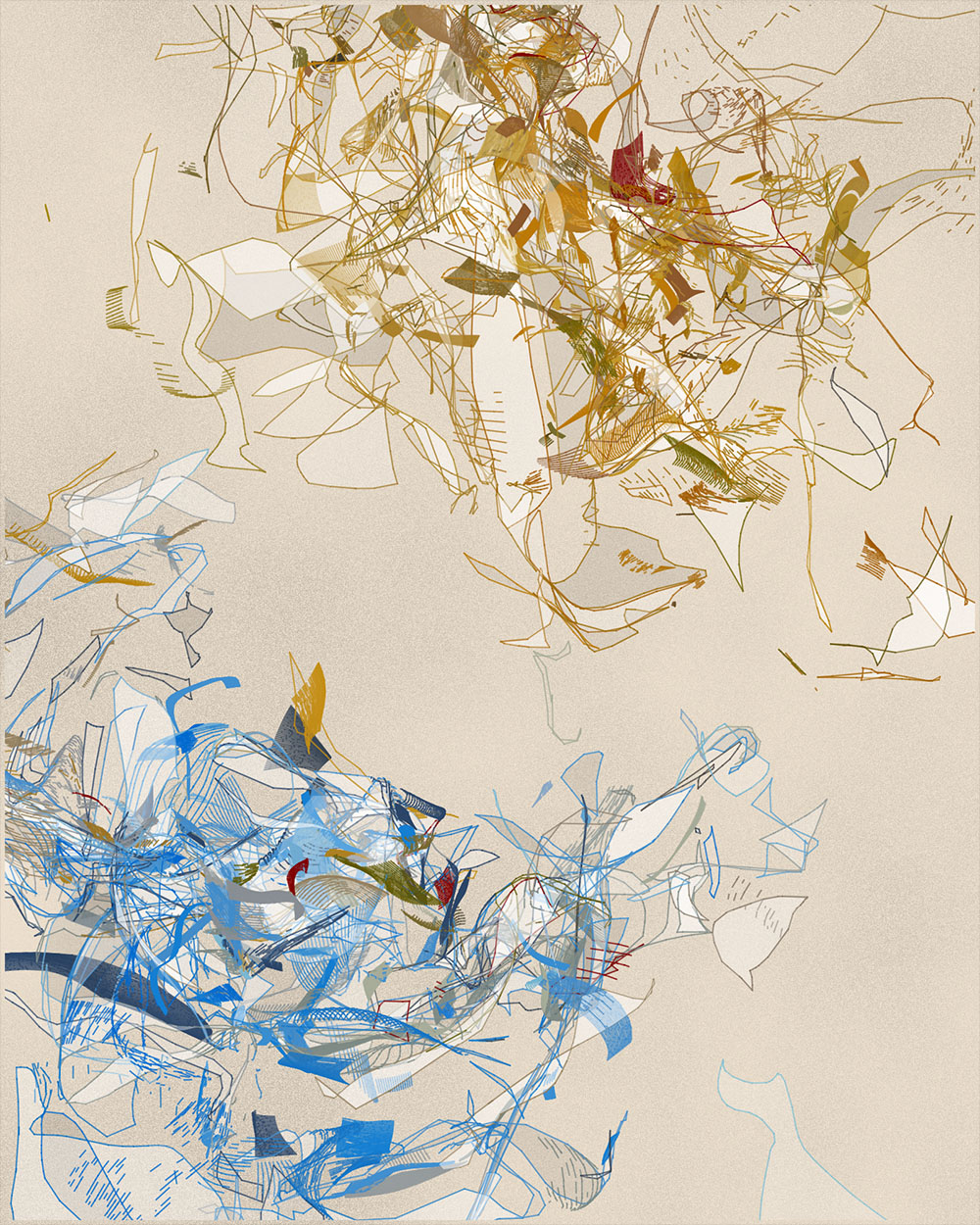
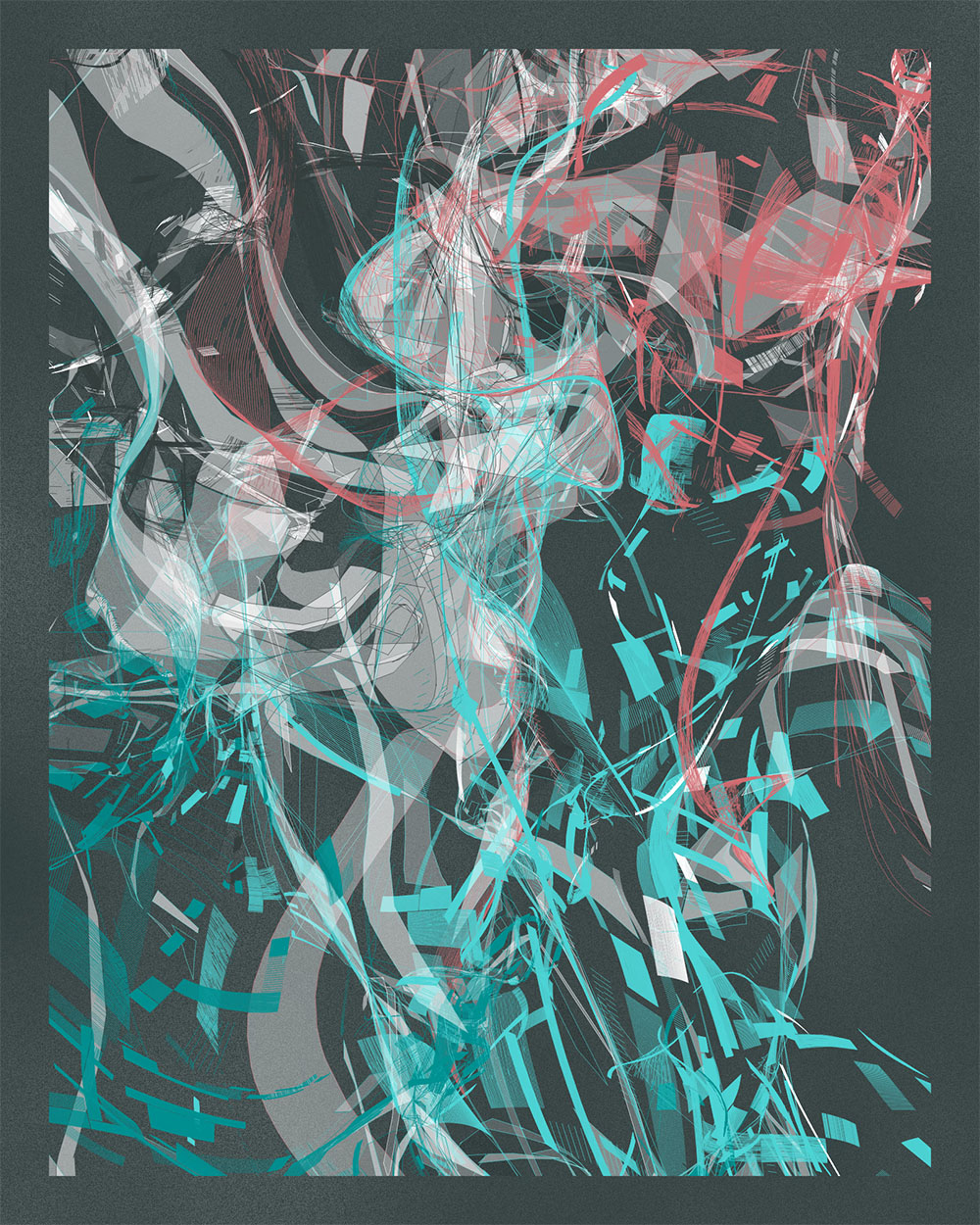
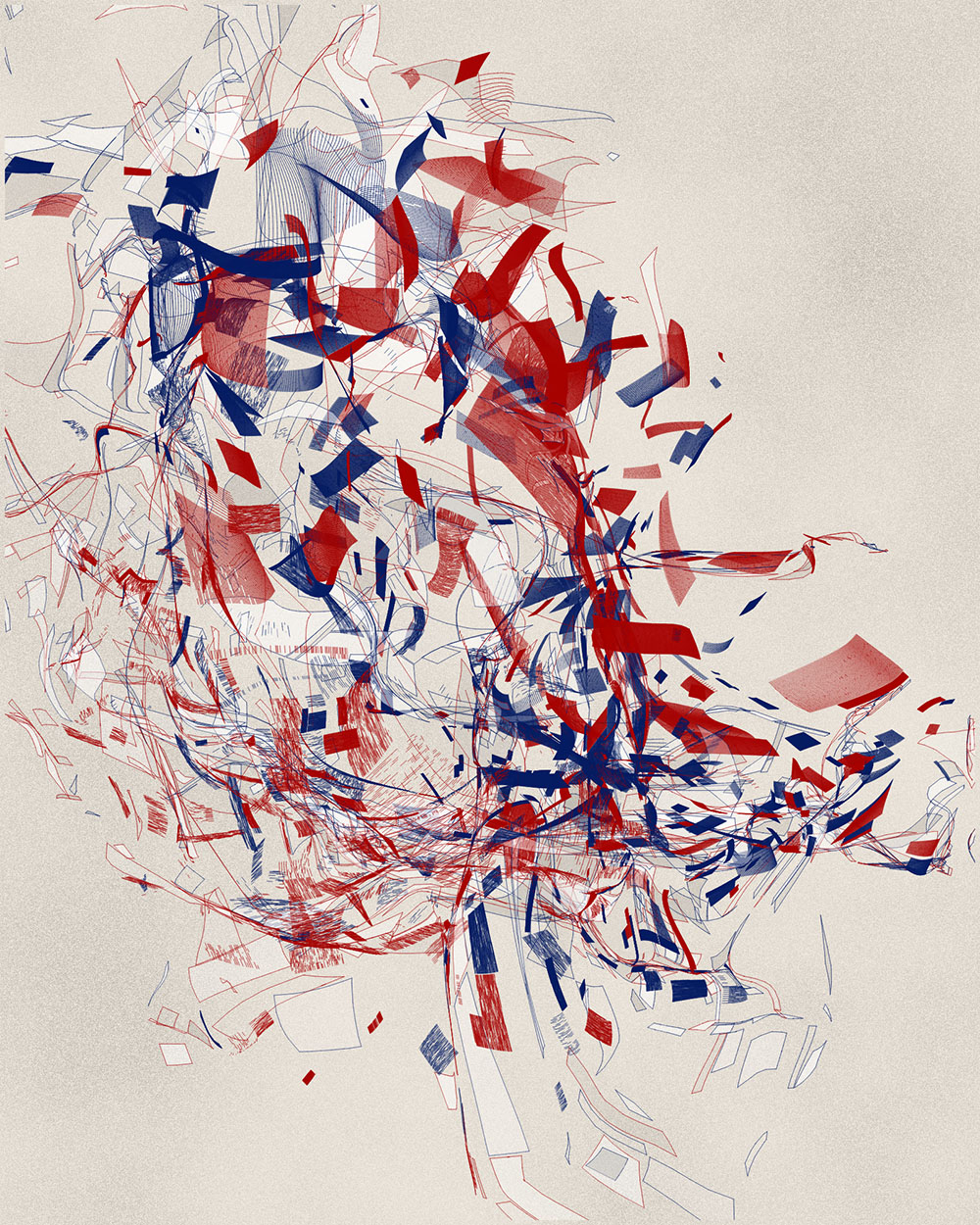
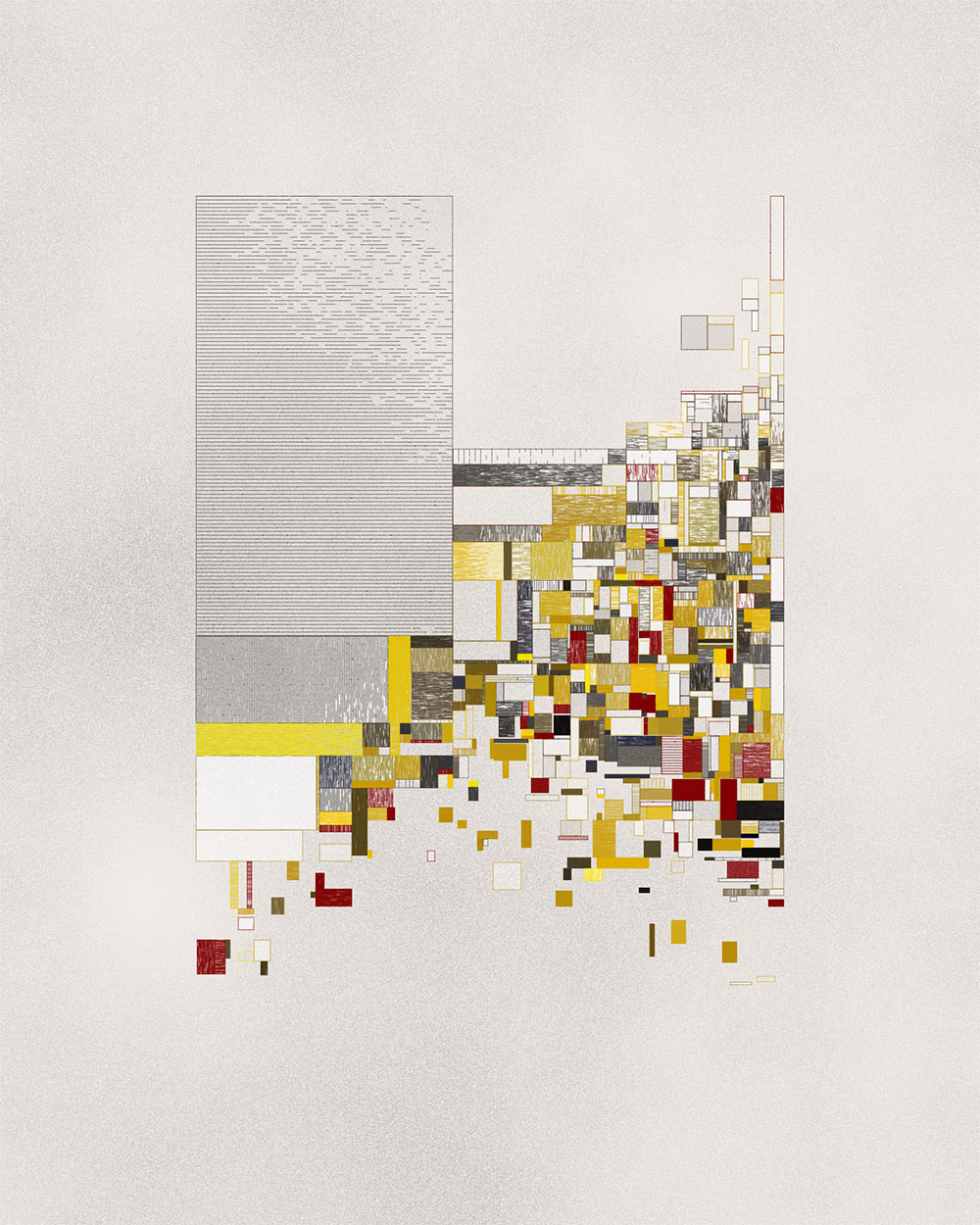
Color palettes
Textures
A noisy grain texture is applied to the background to impart a tactile, less sterile feeling to the viewer. Some shapes are filled with a horizontal or vertical hatching pattern, referencing a hand-drawn aesthetic, producing fine textures and intricate detail. In the excited state these textures can evolve into torrents of dynamic swirls, directing the gaze of the viewer across the canvas.
